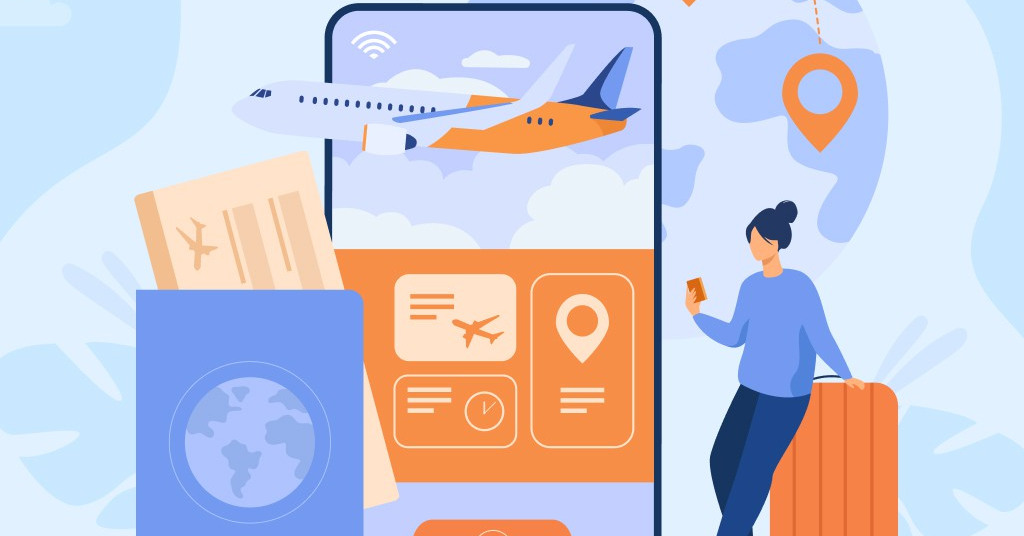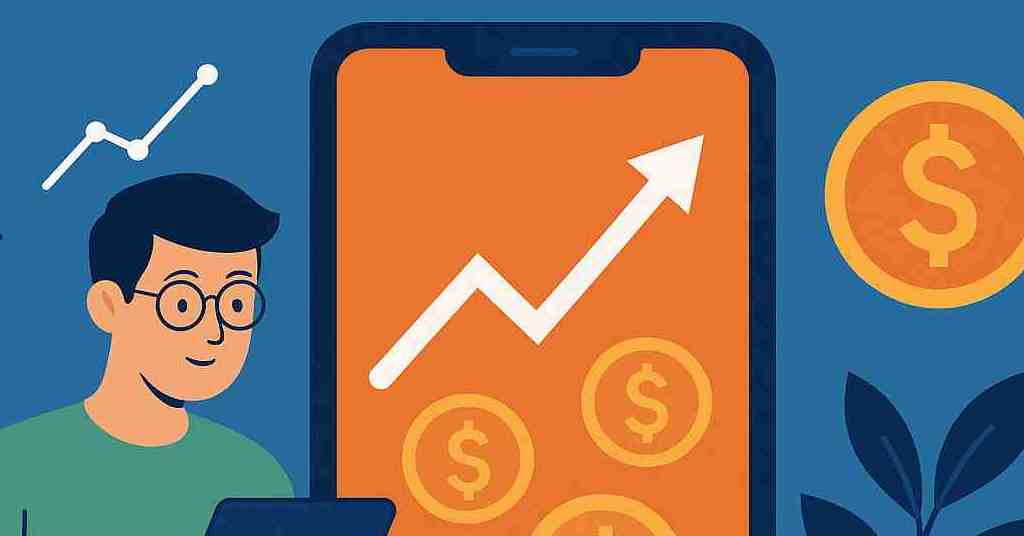
How to Develop Travel App – Detailed Guide 2023
The advancement of technology has made the world more accessible and smaller. Along with that, the actual voyage itself isn't such a huge deal anymore. Any location you want to visit, any hotel you want to stay at, and any meal you want to try are only a few smartphones taps away. There is now a specific application for all travel scenarios and tourism requirements.
Can you picture yourself buying a plane ticket over the counter or using a paper map to find your hotel? Nowadays, practically everything can be done on a phone, which makes planning a trip without technology impossible. According to Statista, the travel app industry will produce $364 million in revenue overall in 2022.
Since the COVID-19 restrictions have been removed, the use of travel apps is increasing once more. The moment is now if you've been considering creating your own travel app, whether it's for easing hotel reservations or providing clients with unique experiences.
1. TRAVEL APP WORLDWIDE GROSS BOOKING VALUE
By 2026, internet sales will also account for 73% of all income in the travel & tourist industry. Mobile travel sales, which now account for almost 50% of all digital travel sales, have grown significantly over the past five years, from 36% to 50%. What other proof do you require?
Determine the nature of your travel app, establish your business model, and figure out how much the MVP will cost.
The issue at hand is how to develop a travel app. What defines a top-notch travel app? Which features should be present in every application, independent of how it is created? What will it cost to create a travel app, and not least? Let's come up with the solutions together.
2. HOW DO TRAVEL APPS WORK?
Travel apps are online tools that make it easier to find, compare, and reserve a variety of travel-related services, including hotel, transportation, and tourist excursions. These programs enable users to look for and book alternate travel arrangements by connecting to a database of travel-related data, such as airline availability and hotel rates.
The software can be used to seek for and book travel alternatives once it has been downloaded. With the aid of numerous travel applications, you can keep track of your itinerary, receive information regarding gate changes and flight status, browse maps, and more.
Some travel apps also let you reserve activities or get recommendations for things to see and do while you're on vacation.
Travel apps are a time- and money-saving way to plan and book your vacation because they let you compare prices and make reservations from the convenience of your mobile device.
3. MOST POPULAR TRAVEL APP TYPES
1. FLIGHT BOOKING APPS
Applications that assist with flight booking are now helped strengthen with one another by providing low costs.
With the help of these applications, users can now select from a range of airline booking options and quickly compare pricing. By using the provided promo codes and discounts, users can save money on airline tickets.
2. ACCOMMODATION BOOKING APPS
Your users may easily communicate with the property and hotel owners in a certain area or location using the Accommodation booking application. Customers can compare the price range and other facilities of various types of stay in the hotel booking app.
3. TRANSPORT APPS
"Transport applications" are programs that make it easier to schedule and pay for transportation services including cab rides, scooter rentals, and bus passes. The majority of these applications use GPS tracking to show nearby automobiles or to keep tabs on a journey.
4. TRAVEL GUIDES APPS
The travel guide app is made for people who will be staying in a place for a long time and want to learn more about the attractions, cuisine, and lifestyle of the location. This application takes into account individual search preferences.
5. NAVIGATION APPS
Visitors can use navigation apps to plan the fastest route from the airport or railway station to their hotels and other attractions. The shortest and least crowded navigational path is shown.
4. CORE FEATURES OF A TRAVEL APP
1. SEARCH AND COMPARISON
Searching for and analyzing various travel possibilities is one of the key features of travel apps. The tool returns a variety of potential routes and associated prices when a user enters their chosen destination, departure and return dates, and the total number of passengers.
Flights, lodging, car rentals, vacation packages, and activities all fall under this category. Some applications allow you to filter your search results based on criteria such as price, vacation duration, and airline or hotel brand. This may help users in their quest for the best answer.
2. BOOKING AND TICKETING
In fact, a number of travel apps now let you purchase your tickets directly from the app. Next, users can complete their booking and pay for their chosen travel options by following the on-screen instructions. The app will then offer the relevant tickets or vouchers after confirmation.
The online trip bookings software gives you the added convenience of storing tickets and other documentation digitally rather than printing them out. This might be useful for travelers and it can also reduce the rubbish.
3. MAPS AND DIRECTIONS
Maps and directions are typically included in travel apps to help users find their location. This may include comprehensive maps of the city and its attractions, as well as directions to and from hotels, airports, and other locations.
Some travel apps offer offline maps, which may be useful for people who won't have cell service or Wi-Fi where they are going.
4. ITINERARY MANAGEMENT
Travelers can keep track of their plans and stay productive while on the road with the help of a variety of mobile apps for travel and tourism that are available today.
Planning out specifics like airline schedules and hotel reservations, as well as a list of sites and locations to see, is one of these capabilities.
By using a travel app that enables you to share your itinerary with loved ones, you can keep them informed and on schedule while keeping yourself on track.
5. PERSONALIZATION
These days, users can choose from a wide range of travel apps that provide them with customized itineraries and advice based on their interests and previous travels.
This can result of innovative travel, lodging, and activity suggestions to the user in keeping with their interests and available budget.
Users are able to create a profile and maintain their travel preferences, such as their preferred airline, hotel brand, and lodging category.
6. REWARD SYSTEMS AND LOYALTY PROGRAMS
Users of a specific travel planner software may be qualified to join a loyalty program that offers benefits like exclusive discounts or reward points if they frequently use it.
You can use the collected points or prizes for things like hotel stays or flights. This can occasionally help travelers save a lot of money or get more out of their reservations.
7. CUSTOMER SUPPORT
Another feature that some travel apps might offer is customer service, either through in-app messaging or a dedicated phone number. This is helpful for customers who are looking for solutions to their travel-related questions or assistance with reservation issues.
8. ADDITIONAL FEATURES
Many mobile apps for travel offer a variety of additional features in addition to the fundamental ones mentioned above that are intended to enhance the travel experience. This might include tools for trip preparation, advice on where to go and what to see, updates on flight status, and travel insurance.
5. HOW TO CREATE A TRAVEL APP?
1. DEFINE YOUR TARGET AUDIENCE AND GOALS
The first step in developing a travel app is determining the intended users and goals of the app. Who is your intended user base, and what do you want them to receive out of using your app? What kind of tourists, if any, are you expecting to draw?
Do you intend to offer customers a wide range of holiday options or do you like to focus on just one aspect of travel, such as accommodations or flights?
You can build the app's capabilities and features to better serve your users by defining the app's core users and establishing clear objectives.
2. RESEARCH THE MARKET
Before developing your app, it's a good idea to perform market research to determine whether there is demand for it. Compare and contrast the offerings of the many travel apps now on the market. This can help you identify market niches and come up with ideas on how to differentiate your app from others.
It is also advised to carry out market research to gather suggestions and ideas from potential customers. You might use the customer comments you receive to improve the design of your app and generate new concepts for mobile travel apps.
3. CREATE A PLAN OF ACTION
After you've determined your app's objective, identified your target market, and researched the market competition, you should build your app's strategy.
A development timetable and a thorough explanation of the features and functionality you intend to implement should be provided.
You should include a budget in your strategy for growth, marketing, and maintenance. By doing this, you can guarantee that your application has the resources it requires to be made available to the public and to be maintained once it is.
4. CHOOSE A DEVELOPMENT PLATFORM
The creation of tourist apps can be done on a variety of platforms, including cross-platform development tools like React Native and Flutter as well as native platforms like iOS and Android.
Your platform choice should be influenced by the unique requirements of your project, the target audience, the resources at your disposal, and your level of technical knowledge.
Native development platforms often offer the best performance and user experience, but their creation costs more money and takes longer.
Cross-platform development tools enable the creation of apps that operate on many platforms while maintaining a single codebase, making them a potentially alluring option for startups and smaller teams.
5. DESIGN AND BUILD YOUR APP
It's now time to create a transit app after choosing a development platform. In addition to writing the code, creating wireframes and prototypes to visualize the app's layout and flow, and integrating any third-party APIs or services are all necessary when designing an application from the ground up.
Extensive testing is necessary during development to ensure that your software is dependable, user-friendly, and achieves your goals. One strategy is to conduct user tests on a small group of individuals to collect their feedback and identify any issues.
6. LAUNCH AND PROMOTE YOUR APP
This process comprises publishing your program to the appropriate app store and opening it to users. A carefully planned and executed app rollout is necessary.
There are several potential channels for getting the word out about your app, including social media, marketing initiatives, and partnerships with significant organizations and people.
To help you with problem fixes and usability issues, it's a good idea to get user feedback before, during, and after the app's deployment.
7. MONETIZE YOUR APP
The best method will depend on your goals and the type of customers you want to reach with your travel app. There are several techniques you can use.
There are several potential options, including charging for reservations made through the app, charging for upgrades or premium features, and selling advertising space to travel-related companies.
Your monetization strategy will influence the look and functionality of your app, so consider it early on. To determine which monetization strategy works best for your app and its users, you should experiment with different options.
8. MEASURE AND ANALYZE YOUR APP’S PERFORMANCE
Finding issues and refining your app for optimum success requires measuring and analysing its performance using app development tools.
Along with user input, metrics like user engagement, retention, and revenue may all be tracked.
You may gather information about the performance of your app and identify areas for development by using technologies like analytics software and user testing.
9. UPDATE AND MAINTAIN YOUR TRAVEL APP
The travel app market is always changing, therefore it's essential that your application remains relevant. This could be adding new features, fixing bugs, or integrating user requests.
Included in your app's overall maintenance and support budget should include charges for hosting, security, and customer support. Your app's continuing success depends on routine maintenance and support.
6. POPULAR TRAVEL APPS AND WEBSITES ACROSS THE GLOBE
1. BOOKING.COM
Booking.com is a worldwide online and mobile hotel and motel reservation service. The app and website offer a variety of lodging options, including hotels, apartments, guesthouses, and vacation rentals.
Users can narrow their search by choosing characteristics that are important to them when looking for lodging by using factors like proximity to tourist attractions, price, and availability.
2. AIRBNB
A mobile app and internet platform called Airbnb allows users to search for and book short-term accommodations including apartments, homes, and hotel rooms anywhere in the world. The app and website offer access to a wide variety of lodging options, including complete flats, single rooms, and big houses.
The app includes reviews and ratings from past users, and after using the service, users can submit their own reviews.
3. HOPPER
A mobile software called Hopper allows users to reserve accommodations such as hotels, cars, and flights. When making travel arrangements, customers should consider the advice provided by historical data analysis, which also alerts them to upcoming pricing changes. When a user sets up a price alert for a specific time and place, the app will notify them when the cost of their journey changes.
4. SKYSCANNER
When making travel plans, you can check the prices of several modes of transportation using the Skyscanner app or website. Customers can choose from a wide range of options on the app and website while looking for travel arrangements based on their preferred destination, intended length of stay, and available budget. By choosing a certain airline, hotel chain, or car service, travelers can focus their search.
7. COST OF A TRAVEL APP DEVELOPMENT
For the purpose of creating a workable budget and timetable, it is imperative to understand the costs related to constructing a travel app. The following factors can have a significant impact on how much it costs to design a travel app:
8. SCOPE AND COMPLEXITY OF THE APP & DEVELOPMENT PLATFORM
The complexity and size of an app can significantly affect the funding allocated for its development, which is why the travel sector is so cutthroat.
Making a straightforward travel booking software that allows users to look up and compare available tickets and make reservations can be less expensive than making one with more complicated features like loyalty schemes, price alerts, and flight tracking.
When creating a trip guide application, you should consider the features and functionality you want to include and how they will affect the overall cost.
Several platforms, including iOS, Android, and cross-platform tools like React Native and Flutter, can be used to create a travel app.
Native development platforms often offer the best performance and user experience, but their creation costs more money and takes longer. This is because creating apps for both iOS and Android requires using two whole distinct codebases.
However, utilizing a single set of source codes, cross-platform development tools enable the creation of mobile apps that work across different platforms. Although it might save time and money, this alternative might not deliver the same performance or user happiness as a native app.
Your platform choice should take into account your needs, the demands of your target audience, the resources you have at your disposal, and your level of technical skill. It's critical to evaluate the advantages and disadvantages of each platform and choose the one that is best for your app and its target audience.
9. DEVELOPMENT TEAM & ONGOING MAINTENANCE & SUPPORT
The size and level of experience of the development team may also have an impact on the cost of developing a travel app. In most circumstances, hiring a bigger, more skilled team to develop the app will increase the cost of app development.
The location of the team working on it can also affect the development cost. Development teams from nations with lower labor costs might be able to provide more affordable prices.
However, it's equally important to consider the caliber of their output as well as the depth and regularity of their contact and support when selecting a development team.
An app's development costs continue even after it is first made available. With each new feature, the price of the software increases along with the costs of hosting, security, and customer support.
Don't forget to factor in the cost of ongoing maintenance and support when creating a budget for your mobile app development project.
10. CLOSING WORDS
The demand for travel apps is increasing since using mobile travel applications makes it easier for passengers to plan and reserve their trips.
You can select the type and use one of the monetization techniques if you want to create a travel app.
However, investing a fortune in app development is not necessary. We advise launching the travel app project as a minimum viable product (MVP) and enhancing it over time.




